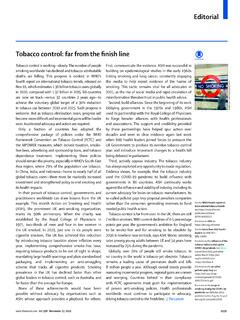Transcription of Construction of a Simplified Wood Gas Generator for ...
1 Construction of a Simplified Wood GasGenerator for Fueling Internal CombustionEngines in a Petroleum Emergency By: H. LaFontaine, Biomass Energy Foundation, lnc. Miami, Florida And:F. P. Zimmerman, Oak Ridge National Laboratory, Energy Division FEMA lnteragency Agreement Number: EMW-84-E-1737 Work Unit: 3521 DFor:Federal Emergency Management Agency, Washington, 20472"This report has been reviewed in the Federal Emergency Management Agency and approved forpublication. Approval does not signify that the contents necessarily reflect the views and policiesof the Federal Emergency Management Agency." Date Published: March 1989 APPROVED FOR PUBLIC RELEASE: DISTRIBUTION :CONTENTS ABSTRACT EXECUTIVE SUMMARY PRINCIPLES OF SOLID FUEL GASIFICATION THE STRATIFIED, DOWNDRAIFT GASIFIER 1.
2 WHAT 1S A WOOD GAS Generator AND HOW DOES IT WORK? OF SOLID FUEL GASIFICATION INFORMATION World War II, Embowered Gasifier Stratified, Downdraft Gasifier 2. BUILDING YOUR OWN WOOD GAS Generator BUILDING THE GAS Generator UNIT AND THE FUEL HOPPER BUILDING THE PRIMARY FILTER BUILDING THE CARBURETING UNIT WITH THE AIR AND THROTTLE CONTROLS 3. OPERATING AND MAINTAINING YOUR WOOD GAS Generator USING WOOD AS A FUEL SPECIAL CONSIDERATIONS AND ENGINE MODIFICATIONS INITIAL START-UP PROCEDURE ROUTINE START-UP PROCEDURE DRIVING AND NORMAL OPERATION SHUTTING DOWN THE GASIFIER ROUTINE MAINTENANCE Daily Maintenance Weekly Maintenance (or every 15 hours of operation) Biweekly Maintenance (or every 30 hours of operation) OPERATING PROBLEMS AND TROUBLE-SHOOTINGCONTENTS HAZARDS ASSOCIATED WITH GASIFIER OPERATION Toxic Hazards Technical Aspects of " Generator Gas, Poisoning" Fire HazardAPPENDICESAPPENDIX I.
3 CONVERSION FACTORS FOR SI UNITS APPENDIX II. LIST OF FIGURES APPENDIX III. LIST OF TABLESAPPENDIX IV. : Construction OF A Simplified WOOD GASGENERATOR FOR FUELING INTERNAL COMBUSTION ENGINES IN APETROLEUM EMERGENCYH. LaFontaine, G. P. Zimmerman This report is one in a series of emergency technology assessments sponsored by theFederal Emergency Management Agency (FEMA). The purpose of this report is to developdetailed, illustrated instructions for the fabrication, installation, and operation of a biomassgasifier unit ( , a 'producer gas' Generator , also called a "wood gas' Generator ) that is capable ofproviding emergency fuel for vehicles, such as tractors and trucks, in the event that normalpetroleum sources were severely disrupted for an extended period of time.
4 These instructionshave been prepared as a manual for use by any mechanic who is reasonably proficient in metalfabrication or engine repair. This report attempts to preserve the knowledge about woodgasification that was put into practical use during World War II. Detailed, step-by-stepfabrication procedures are presented for a Simplified version of the World War II, Emboweredwood gas Generator . This simple, stratified, downdraft gasifier unit can be constructed frommaterials that would be widely available in the United States in a prolonged petroleum crisis. Forexample, the body of the unit consists of a galvanized metal garbage can atop a small metaldrum; common plumbing fittings throughout; and a large, stainless steel mixing bowl for thegrate.
5 The entire compact unit was mounted onto the front of a farm tractor and successfully fieldtested, using wood chips as the only fuel. Photographic documentation of the actual assembly ofthe unit as well as its operation is included. Executive SummaryThis report is one in a series of emergency technology assessments sponsored by theFederal Emergency Management Agency (FEMA). The purpose of this report is to developdetailed, illustrated instructions for the fabrication, installation, and operation of a biomassgasifier unit ( a "producer gas" Generator , also called a "wood gas" Generator ) which is capableof providing emergency fuel for vehicles, such as tractors and trucks, should normal petroleumsources be severely disrupted for an extended period of time.
6 These instructions have beenprepared as a manual for use by any mechanic who is reasonably proficient in metal fabricationor engine repair. Fuel gas, produced by the reduction of coal and peat, was used for heating as early as1840 in Europe and by 1884 had been adapted to fuel engines in England. Prior to 1940, gasgenerator units were a familiar, but not extensively utilized, technology. However, petroleumshortages during World War II led to widespread gas Generator applications in the transportationindustries of Western Europe. (Charcoal burning taxis, a related application, were still commonin Korea as late as 1970.) The United States, never faced with such prolonged or severe oilshortages, has lagged far behind Europe and the Orient in familiarity with and application of thistechnology.
7 However, a catastrophic event could disrupt the supply of petroleum in this country soseverely that this technology might be critical in meeting the energy needs of some essentialeconomic activities, such as the production and distribution of food. In occupied Denmarkduring World War II, 95% of all mobile farm machinery, tractors, trucks, stationary engines, andfishing and ferry boats were powered by wood gas Generator units. Even in neutral Sweden, 40%of all motor traffic operated on gas derived from wood or charcoal. All over Europe, Asia, andAustralia, millions of gas generators were in operation between 1940 and 1946. Because of the wood gasifier s health risks from toxic fumes, most of such units wereabandoned when oil again became available in 1945.
8 Except for the technology of producingalternate fuels, such as methane or alcohol, the only solution for operating existing internalcombustion engines, when oil and petroleum products are not available, has been these simple,inexpensive Gasifier units. This report attempts to preserve the knowledge about wood gasification that was put intopractical use during World War II. In this report , detailed step-by-step procedures are presentedfor constructing a Simplified version of the WWII wood gas Generator ; this simple, stratified,downdraft Gasifier unit (shown schematically in ) can be constructed from materialswhich would be widely available in the United States in a prolonged petroleum crisis. Forexample, the body of the unit consists of a galvanized metal garbage can atop a small metaldrum; common plumbing fittings are used throughout; and a large, stainless steel mixing bowl isused for the grate.
9 A prototype Gasifier unit was fabricated from these instructions (see Fig. S-2);this unit was then mounted onto the front of a farm tractor and successfully field tested, usingwood chips as the only fuel (see Fig. S-3). Photographic documentation of the actual assembly ofthe unit, as well as its operational field test, is included in the body of this report . These wood gas generators need not be limited to transportation applications. Stationaryengines can also be fueled by wood gasifiers to run electric generators, pumps, and industrialequipment. In fact, the use of wood gas as a fuel is not even restricted to gasoline engines; if asmall amount of diesel fuel is used for ignition, a properly adjusted diesel engine can be operatedprimarily on wood gas introduced through the intake manifold.
10 Principles of solid fuel gasificationAll internal combustion engines actually run on vapor, not liquid. The liquid fuels usedby gasoline engines are vaporized before they enter the combustion chamber above the diesel engines, the fuel is sprayed into the combustion chamber as fine droplets which burn asthey vaporize. The purpose of a Gasifier, then, is to transform solid fuels into gaseous ones and to keepthe gas free of harmful constituents. A gas Generator unit is simultaneously an energy converterand a filter. In these twin tasks lie its advantages and its difficulties. In a sense, gasification is aform of incomplete combustion-heat from the burning solid fuel creates gases which are unableto burn completely because of the insufficient amounts of oxygen from the available supply ofair.





